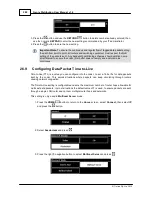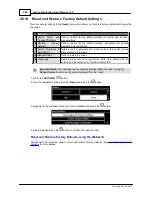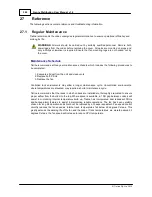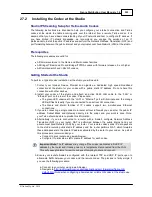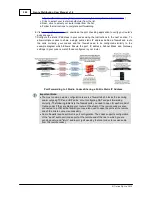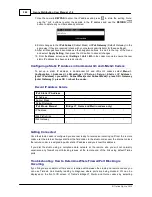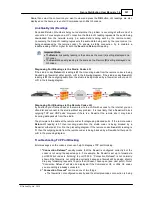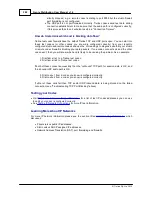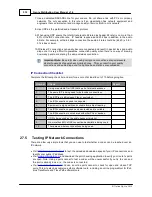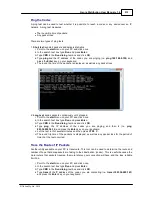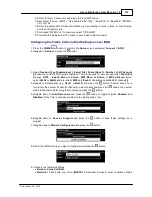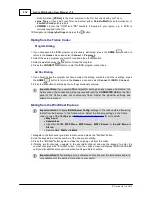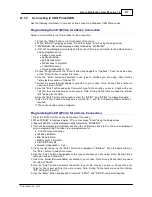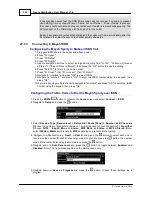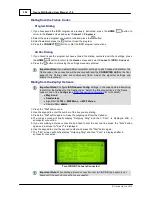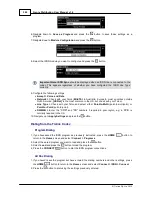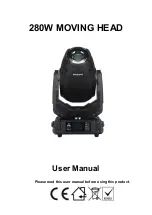
311
© Tieline Pty. Ltd. 2015
Genie Distribution User Manual v1.6
27.4
Tips for Creating Reliable IP Connections
The following 10 tips are provided to help obtain the best possible IP connection between two
codecs, without paying for Quality of Service (QoS).
1. Always use the best quality Internet Service Provider (ISP). Tier 1 service providers are best
as their infrastructure actually makes up the internet ‘backbone’. Wikipedia lists the major
service providers that make up the internet backbone at: http://en.wikipedia.org/wiki/
internet_backbone. In Australia Telstra is equivalent to one of these service providers.
2. You will get the best quality connection if both the local (studio) and remote codecs use the
same ISP. This can substantially increase reliability, audio bandwidth and reduce audio
delay. Using the same service provider nationally can give better results than using different
local service providers. This is especially true if one of the service providers is a cheap, low-
end domestic service provider, which buys its bandwidth from other ISPs. Second and third
tier providers sublease bandwidth from first tier providers and can result in connection
reliability issues due to multiple switch hops. We also highly recommend using First Tier
ISPs if connecting two codecs in different countries.
3. Sign up for a business plan that provides better performance than domestic or residential
plans. Business plans typically have a fixed data limit per month with an additional cost for
data beyond that limit. In addition, Service Level Agreements (SLA) will often provide better
support and response times in the event of a connection failure. Domestic plans are often
speed-limited or “shaped” when usage exceeds a predefined limit. These plans are cheap but
they are dangerous for streaming broadcast audio.
4. Ensure that the speed of the connection for both codecs is adequate for the job. The
minimum upload speed recommended is 256 kbps for a studio codec and 64 kbps for a field
unit connection.
5. Use good quality equipment to connect your codecs to the internet. (Tieline successfully
uses Cisco® switching and routing equipment.):
·
If you are using a DSL or ADSL connection make sure you purchase a high quality modem
that can easily meet your speed requirements. This is especially important if you are over 4
kms from an exchange.
·
If you have multiple codecs connected to a local area network (LAN) please ensure that your
network infrastructure is designed for media streaming and not domestic usage. Tieline has
tested several cheap 8-port switches that lose more packets between local computers than
an international IP connection between Australia and the USA!
·
If using a wireless connection ensure that the antenna signal strength received is strong. The
type of antenna used and the amount of output gain also affects connection quality.
Important Note:
You should be able to stream audio between two codecs on your
LAN and get high percentage send/return ‘link quality’ readings of around 99. If you
see anything less than this then you should get a network engineer to investigate the
issue.
6. Once your internet connection is installed at the studio check that the connection
performance is approximately what you ordered and are paying for. A connection can
perform below advertised bit rates if:
·
There is an error in ISP configuration;
·
There is an error in modem configuration;
·
There is a poor quality line between the studio and the exchange;
·
There are too may phones or faxes connected to the phone line; or
·
Line filters have been connected incorrectly.


